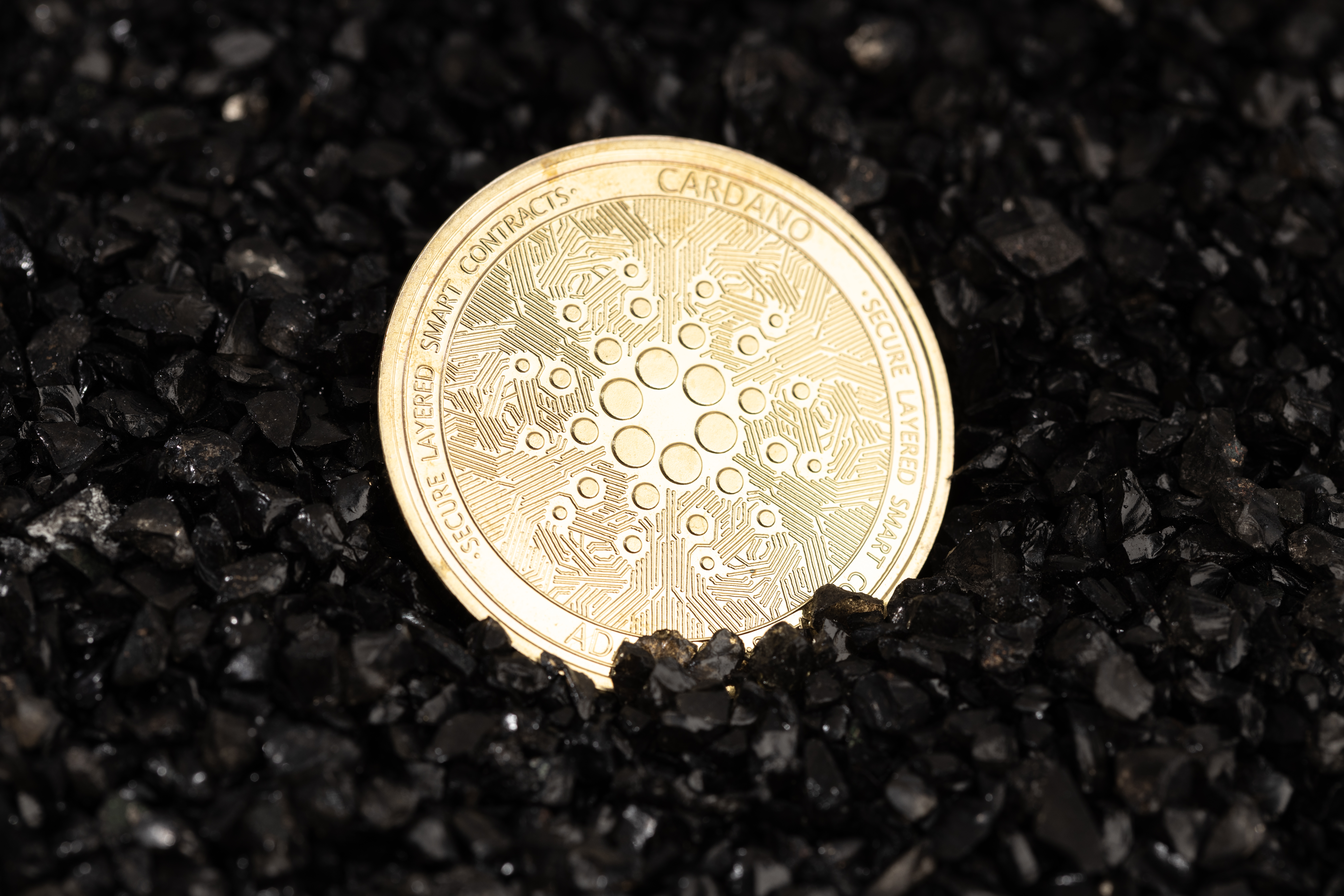Finding the best staking coins is very important if you want to maximize your staking potential and gain more ROI. Several factors need to be taken into account when considering what coin would make a good option for you.
Consider things such as how many coins per block there are, the current price of the coin/token, and what % return on investment (ROI) it has given over the last year.
Smaller coins with high stakes of 25-50% per year are great options for maximizing your staking potential. Finding the best staking coins is all about finding a profitable coin that will give you good returns over time. Smaller market cap cryptocurrencies are more likely to have higher percentage returns, so this is one factor to consider when researching new projects.
However, suppose the return on investment is too high before the project has any actual use. In that case, it can be seen as “false advertising,” Investors may choose not to invest if they see that the promised ROI doesn’t seem possible.
But before we talk about the best staking coins out there, let’s spend a few minutes discussing what staking is, how to get started, and what factors to consider before staking.
What is Staking?
Staking is a term used in the cryptocurrency world to describe the act of holding coins in a wallet or on an exchange to earn rewards. These rewards can come in the form of newly created coins, transaction fees, or even both.
The number of rewards you receive for staking will depend on a few different factors, such as the number of coins you are staking, the network weight. and how long you have been staking.
How to Get Started with Staking?

The first step is to find a wallet that supports staking. Unfortunately, not all wallets support this feature, so it’s essential to do your research before selecting one. Once you have chosen a wallet, you will need to set up a staking address and configure your staking settings.
The final step is to start staking! You will need to keep your wallet open and connected to the network to receive rewards.
What to Consider
There is no right answer, but below I have outlined some things to think about when choosing which type of cryptocurrency to stake:
If you want quick results – False Coins
These types of cryptocurrencies can give massive gains during a short period. After that, however, you run the risk that the coin comes crashing down. For every story you hear about someone making millions off a false coin or meme coin (like Shiba Inu), thousands lost their rears.
While these coins offer high returns in a short period, you run the risk of losing your entire investment if you’re not careful. So while I won’t say you need to avoid these coins altogether, I will tell you never to invest more than you’re willing to lose.
If you want to minimize your risk – True Coins
To minimize your investment risk, consider coins that have been around a while and boast a solid track record. These are tried and tested projects that don’t carry the inherent risk associated with many cryptocurrencies.
While you won’t get the fast returns you might get with other, less reliable crypto assets, you will get a steady rate of return. Plus, these projects are more likely to last over the long haul.
If you want to maximize your Return on Investment: Diversify
Of course, your best bet is to diversify your staking portfolio. Choose a few coins that fall into each category. This way, you’re not taking too much risk, but you still have a solid investment in coins that offer high returns.
Stacking up on coins that don’t offer high returns may not achieve much in the short term, but you’ll likely see long-term gains. On the other hand, high-risk, high-reward coins are great if you want to see your investments go to the moon!
Features of a Good Staking Coin

While you’re deciding whether what type of coin to choose, you might dig a little deeper and think about what makes a good staking coin. Let’s look at some of the features you might look for.
Solid background
Determine how long the altcoin should be in existence. If it’s less than a few years, you might do a little more research into the legitimacy of the project and the team leading the way. Additionally, take a look at the project’s past and predicted growth.
Consistent returns
Are you going to get good returns out of the project? Sure, the market is prone to highs and lows, but you still want to find a digital asset that’s giving you more than the 1% you’ll get from your savings account (if you’re lucky). Projects that don’t provide good returns probably aren’t worth your time.
Supply and demand
The economics of the coin isn’t quite as important with newer coins since there is typically enough to go around. However, you’ll want to make sure the coins will hold their value with older projects. Something else to consider when selecting a coin is the type of inflationary method the project plans to use – or if it plans to use one at all.
Community
Look for a project with a strong, supporting, and involved community. An active community is a good sign that a cryptocurrency is well-supported. Plus, when a community is heavily involved in a project, they’re likely to spread the word and recruit additional users.
Best Staking Coins
Now that you know what to look for in a staking coin let’s look at some of the best staking coins in the market. Here are a few to consider adding to your portfolio:
Cardano (ADA)

You might often hear this proof-of-stake (PoS) coin described as an Ethereum killer. While it’s not going to kill the second-largest cryptocurrency, it is a direct competitor and one of my favorite projects.
Cardano can handle hundreds of transactions per second with its PoS consensus mechanism. Plus, the project has a head start on Ethereum as it implemented proof-of-stake from the get-go. Ethereum is just now moving to that type of consensus method.
You can stake your coins on the Cardano network, earning rewards (returns) on your investment over time. While you may not get the same returns you’ll get with riskier projects; you’re still likely to see 4-5%, which is more than traditional banking institutions will offer.
An exciting aspect of this project is the ability to stake your coins right in its supported wallets. For example, Yoroi and Daedalus are ADA wallets that make it very easy for users to put their Cardano to work for them.
Algorand (ALGO)
Next up on our list of best staking coins is Algorand, also known as ALGO. This finance-focused digital asset wants to solve the scalability issue that plagues that blockchain world. Algorand plans to do this through validators that quickly process transactions on its network.
Like Cardano, Ethereum, and other platforms, Algorand supports decentralized applications – or dApps – but does so faster and at a lower cost. In addition, like Cardano, Algorand uses proof-of-stake as its consensus mechanism, which allows for decentralization and democratization.
It doesn’t hurt that Algorand is easy to stake. So whether you decide to use a popular desktop wallet like Exodus or the official Algorand wallet, you’ll have a good chance of earning roughly 5% on your investments.
Polkadot (DOT)

Another staking coin that I like is Polkadot. Don’t let its name and pretty pink dots fool you; this project is legit. Even though Polkadot is touted as another Ethereum challenger, it’s made a name for itself by entering the top-10 of all digital currencies by market capitalization.
Validators on the Polkadot blockchain confirm network transactions, which is how proof-of-stake platforms work. However, a few differences set Polkadot apart from other projects. For starters, it’s pretty tough to become a validator with Polkadot.
Of course, if you do manage to become a validator, you’ll see pretty good returns on your investment. But even if you can’t afford to purchase that much DOT, you can still earn around 14% by staking it on platforms like Coinbase, Kraken, or Binance.
Polygon (MATIC)
One of the biggest challenges in the blockchain world is scaling, which is what Polygon attempts to address. Touting itself as “Ethereum’s Internet of Blockchains,” this project connects dApps built on the Ethereum blockchain. By ensuring these apps are all built on the same platform, Polygon offers compatibility between applications on the network.
With the ability to handle over 65,000 transactions every second, Polygon makes a case for itself as a project that can handle scalability as the crypto space grows. Users who stake their Polygon, or MATIC, are validators on the network. By staking digital assets, users provide the necessary functionality to confirm transactions on the Polygon blockchain.
So how do you go about staking your Polygon digital assets? One option is through Polygon’s online web wallet, or you can connect Metamask and stake your MATIC there as well. It’s tough to determine how much you’ll earn when you are staking your coins, but Polygon’s web wallet includes a calculator so you can make your own predictions based on how much you hold and how long you plan to hold.
ICON (ICX)
![]()
The penultimate (next to last) coin on our list is ICON. Like Polygon, ICON looks at offering interoperability between multiple networks and blockchains. However, ICON can only handle a few hundred transactions each second. So then why did I include it?
ICON uses a variant of the proof-of-stake consensus algorithm called the Byzantine Fault Tolerance. This type of consensus mechanism requires two-thirds of the blockchain to agree on every transaction before it’s validated. Byzantine Fault Tolerance accounts for bad actors on the blockchain, which is why it only requires 66.7% of the nodes to agree.
If you want to stake some ICX tokens, it’s not too difficult. For example, you can stake your coins through multiple exchanges like Binance or Kraken. You can also stake through desktop and hardware wallets, as well as the official ICON browser extension.
While the rate of returns on cryptocurrency is volatile, the opportunity for great earnings exists. For example, if you invest in ICON and stake your coins, you could earn up to 16% annually on your investment. Not too bad if you ask me.
Cosmos (ATOM)

While other projects try to make the same claim, many within the blockchain world know Cosmos as the “internet of blockchains.” The project gets this name because it focuses on creating interoperability for all blockchain projects, not just those on the Ethereum network.
Like most of the projects on this list, Cosmos uses the proof-of-stake consensus algorithm to confirm transactions on its network. Consensus is performed through validator nodes, which stake ATOM on the blockchain and earn rewards for doing so.
There are plenty of places to stake ATOM. Some people like to use desktop wallets, while others prefer to use a crypto exchange. But, no matter where you stake it, there’s a good chance you’ll see double digits in return. That’s because the average return on investment for those who stake their ATOM hovers between 9 and 10 percent.
Frequently Asked Questions
There is a lot of information to unpack in this piece, so let’s go through a few frequently asked questions to help sort things out.
Answer: Staking is a cryptocurrency term. You stake your digital coins to earn rewards through a specific blockchain. Some rewards are locked and can’t be accessed for a certain amount of time, while others let you stake and unstake as often as you want. However, many platforms punish those who don’t stake their coins long enough through fees.
Answer: There are several reasons to consider staking your coins. Here are a few:
• Passive income: You’re earning passive income on your investment when you stake your coins. Plus, most projects offer returns that are much higher than you’ll get by stuffing your money into a savings account.
• Security: Staking increases both the security of your cryptocurrency and the security of the blockchain. This is because the coins are safe in a secured wallet while the platform has the nodes and validators; it needs to confirm transactions on the network.
• Diversifying: Spreading your finances across multiple investments allows you to minimize your risk while maximizing profits. But, of course, don’t put all your eggs in one basket, right?
Answer: Don’t let the technology and terminology intimidate you. To begin staking, you’ll need to purchase cryptocurrency, which you can do through platforms like Coinbase, Kraken, Binance, or Gemini. Then, once you have the coins, transfer them into a staking wallet.
Different wallets and projects have different staking requirements, so be sure you read up on them before buying. Believe me; it really stinks when you buy coins for a project you like only to discover you’re nowhere near the minimum amount needed to stake.
Do your research, so you know exactly what you’re getting into before you click that buy button.
Let’s Go Staking
It’s safe to say there are plenty of opportunities when it comes to staking. Finding the best staking coins takes time but don’t let that deter you. Just because someone suggests one type of coin doesn’t mean it’s the right one for you. There is no shortage of options available.
Use the guidelines above so you can make informed, intelligent decisions as you search for the right coin to stake. Remember to look for one that fits into your investment goals. Never invest more than you can afford to lose.
So what are you waiting for? Get to staking!
For More interesting readings check out:
